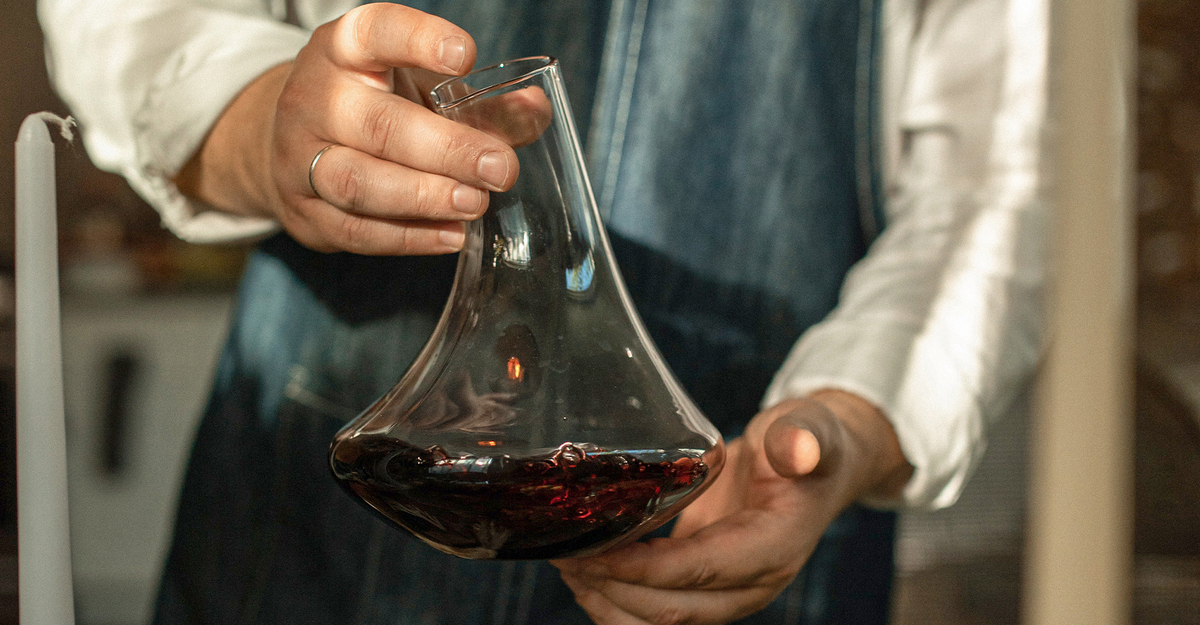30 de September de 2022
Decanting wine: Why and how
Some time ago we talked about decanters when we answered the question “why does wine need to breathe?” But this dreaded object not only helps to incorporate oxygen. To tell the truth, the main reasons why it is used are two and both influence on our perception of aroma, texture and flavour of wine.
Decanting wine is nothing more than the act of transferring the wine from the bottle to another wider container. The goal is that the wine can come into contact with oxygen and, if necessary, separate it from solid sediments that may have developed in the bottle.
But the truth is that not all wines need to be decanted. Young white or red wines are more likely not to need it, as sediments tend to develop in red wines over time. In addition, young wines are not so complex as to need the “help” that the air provides to express themselves, although they can be more tannic, but just swirl them in the glass a bit and that’s it. Although there are those who argue that all wine benefits from this object. In any case, it is the fine and older wines that usually pass through a decanter before reaching the glass, as the extraordinary Carmenère Carmín de Peumo 2018.
To clean sediments
Over the years, red wines can develop solid sediment. It is an absolutely normal process that doesn’t cause any damage to wine nor does it mean that it is in bad condition. It is the result of the oxidation or reduction processes that occur in some wines as solid particles that precipitate to the bottom of the bottle, or also small crystals that are made after the union of sugar molecules in the wine. If we drink them, they can feel a bit bitter, astringent or uncomfortable on the palate. Besides, by the way, aesthetically “affecting” the wine…many people just don’t like to see these residues in their glass.
This would have been the main reason why the decanter was created in the days of alchemy. But then modern oenology invented methods for clarifying wine that practically make using the decanter to clean sediment a rarity. Except for natural wines, of course. Since these wines have low or no intervention, they don’t usually go through the filtering or clarification process.
To oxygenate the wine
The second and great reason why the decanter is used is to aerate the wine. Again, there are those who argue that the longer the wine spends in contact with oxygen, the more diffuse its aromas and flavours will be. However, there are cases in which we can find unpleasant aromas when opening a bottle, which are nothing more than the “reductive aromas” that are formed when the wine is stored for a long time in the bottle or under conditions that are too hermetic. In this case, the decanter plays an essential role: it helps the wine to come into contact with the air, allowing odours to be ventilated allowing the real wine aromas to come to light. This action is especially recommended grape varieties like Syrah, such as Marqués de Casa Concha Syrah, to better appreciate its complex flavours of cherry, blueberry and liquorice.
In addition, it helps bolder wines that have been stored for a long time to release their aromas; while in young red wines it helps to balance its acidity and tannins, since when the wine releases gases such as CO2 it feels less tannic.
How to do it
The designs of the decanters are all different, as they constitute a piece of design that oenophiles keep with a certain pride. But beyond aesthetics, most have a wide base with a large surface area for sediment to settle to the bottom and a much narrower neck.
When decanting a wine, take the bottle and place it vertically on the table, ideally a day before. Then, without moving it too much, remove the foil to uncork it. In a lighted place pour the wine slowly into the decanter and stop once you see the sediment on the neck of the wine bottle. Wait a few minutes and you can now pour yourself a drink. To enjoy!










